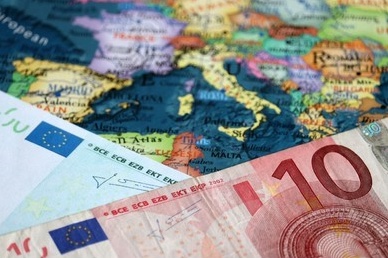Ask climate policy specialists about the best approach to rapidly phase out fossil fuels, and it’s a good bet that many will offer carbon pricing as the answer. Innumerable economic studies bear this out, but the powerful effect of a carbon tax is also pretty intuitive. As long as comparably priced clean alternatives exist, using the power of government to make a polluting fuel more expensive will obviously drive adoption of the cheaper, untaxed options. If effectively implemented worldwide, carbon pricing would solve the global commons problem of carbon dioxide emissions, reallocating the cost of that pollution from individuals to the private companies that are profiting from the fuel sales. Carbon pricing thus neatly embodies a fundamental principle of environmental law: the polluter pays.
Unfortunately, the gap between this theoretical idea and its practical implementation is enormous, and the political landscape is littered with the remains of failed carbon pricing proposals. To understand this, we can note that fossil fuels touch nearly every part of the global economy, so the detailed design of specific policies is challenging. On top of that, different stakeholders naturally have distinct policy preferences that have to be negotiated. So we shouldn’t have expected an easy ride, even given the general consensus for this approach among policy wonks. Yet the vehemence of the opposition to the very idea of pricing, from both ends of the political spectrum, was surprising. Pricing is a “market-based” approach that one might have expected conservatives to support – but the influence of fossil fuel lobbyists in the US and the strength of state-owned oil companies elsewhere in the world has generated staunch resistance. Some progressives, on the other hand, oppose pricing on ideological grounds, because they view capitalism itself as the cause of the climate problem and are thus skeptical that markets can provide the solution.
The strength of the opposition has relegated carbon pricing to a minor role in the policy toolkit, but the force of the idea and the perseverance of its proponents has nonetheless led to some successful local and regional programs. In fact, a recent study by the International Monetary Fund found that 46 countries have implemented carbon pricing in the form of direct taxes or emissions trading programs, and some 30% of global emissions are covered by these policies. This doesn’t sound too bad, but many of the laws cover emissions only from particular manufacturing sectors, and the actual prices are often so low that they don’t offer enough incentive to move away from fossil fuels. A major issue is leakage, which means the departure of manufacturing companies to nearby jurisdictions with lower carbon prices or no price at all. In an increasingly interconnected global economy, the leakage problem really highlights the importance of getting at least a solid majority of the highest emitting countries on board.
This contentious history allows us to better appreciate the significance of a potentially transformative new carbon pricing policy that has just appeared on the global stage – the European Union’s Carbon Border Adjustment Mechanism (CBAM). CBAM builds on the EU’s Emissions Trading System, which has been in place since 2005. Although the ETS only applies to slightly over a third of the EU’s emissions, mainly from electric power generation and energy-intensive manufacturing, it has overcome many challenges and by 2021 had helped to reduce emissions in these sectors by 35% over 16 years. The ETS is a cap-and-trade carbon pricing program, which means that the government sets a maximum emissions cap that is slowly reduced over time. Regulated companies have to acquire allowances that permit emission of one ton of CO2 each, and the price of the allowances fluctuates in trading markets. Unfortunately, to prevent leakage, the ETS initially gave out allowances for free – although fines imposed on companies that could not meet the slowly reducing cap still provided an incentive to cut emissions. Over time, regulated companies improved their performance and the number of free allowances declined. As a consequence, the carbon price has sharply increased since 2018, reaching an average of $87 per ton of emitted CO2 over the first ten months of 2022. That is certainly high enough to spur accelerated movement away from fossil fuels. With this achievement, the EU’s ETS has arguably become the world’s most effective carbon pricing program.
Despite this success, however, the ETS still has to cope with the reality that most of the world either imposes a very low carbon price, or no price at all. This means that foreign countries with zero or low carbon prices are able to produce carbon-intensive goods more cheaply, and can undercut domestic manufacturers when they export these goods to the EU. Here is where the new CBAM policy comes in. To understand the basic idea, we just need to recognize that “border adjustment” actually means “tariff”. EU importers who accept carbon-intensive goods from countries with low or nonexistent carbon prices will collect a tariff – at the current ETS allowance price – for the emissions associated with production of those goods abroad. If the foreign tax is low, the tariff is set to make up for the difference, so that foreign and domestic manufacturers in the EU are on the same playing field. The program will be slowly phased in over the next decade, and will initially cover cement, iron and steel, aluminum, fertilizers, electricity and hydrogen. One of the great hoped-for outcomes is that the CBAM will spur a domino effect, incentivizing foreign countries to adopt or accelerate their own carbon pricing plans to avoid the tariff. For example, China has an ETS that was initiated two years ago, but its carbon price is still very low, fluctuating around $8 per ton. China is among the largest CBAM-covered product exporters to the EU, so the program could accelerate China’s implementation of its new ETS, leading to significant emissions reductions. And likewise for other EU trading partners.
Any country or alliance that imposes tariffs has to be concerned about challenges to their legitimacy under World Trade Organization rules. The 164 countries in the WTO agree to abide by rules that remove discriminatory barriers to trade. When enacting border tariffs like CBAM, WTO member countries (including the EU alliance) may not discriminate among similar products provided by different foreign countries, nor may they use the tariff to favor their own manufacturers. The WTO challenges will play out in the next few years, but experts seem optimistic that the CBAM will pass muster, although some modifications might be needed. One key point is that the EU is already pricing its own carbon-intensive products, and seeks only to subject imported goods to the same levy. That is a major point in the CBAM’s favor. It is possible that some least-developed countries may challenge CBAM on grounds that they lack the resources to put costly emissions reductions measures in place, leading to higher tariffs and a disadvantaged trading position. The EU hopes to address this concern with CBAM rules requiring offers of technical and financial assistance to promote decarbonization in the developing countries.
What does all this mean for the US, a country where the graveyard of buried carbon pricing legislation is particularly well-filled? The US does have regional cap-and-trade programs in California and the Northeast that are working reasonably well, but it has repeatedly failed to enact federal laws establishing either emissions trading or a direct carbon tax. The most notable recent attempt was the Energy Innovation and Carbon Dividend Act (EICDA), which would have imposed an aggressive escalating fee on carbon emissions from coal, oil and gas, likely sufficient to foster enough carbon drawdown to meet US commitments under the Paris Agreement. Its most interesting feature was an attempt to solve the politically fractious problem of what to do with the substantial revenues, by returning them to American households in the form of monthly dividend checks. Like the CBAM, the EICDA’s border adjustment mechanism would likely have passed muster with the WTO because tariffs were to be coupled to a domestic carbon tax. The EICDA attracted substantial cosponsors in both houses of the 2021-2022 Congress, but ultimately could not overcome behind-the-scenes pressure against the law from fossil fuel interests. It has just been reintroduced, but stands no chance of advancing in the Republican-controlled House of Representatives.
There are some who hope that the CBAM will, against all odds, spur the US to try again to enact a national carbon tax to avoid the new EU tariffs (a federal cap-and-trade law is off the table because it would conflict with the regional programs). However, while some pressure from US exporters is possible, the only covered products that the US exports to Europe in appreciable quantities are iron, steel and aluminum, and the exporters of these goods can likely find other foreign markets. CBAM’s envisioned domino effect could be real and appreciable, but will work best for the EU’s major trading partners in the covered goods – China, the UK, Brazil, South Africa, Turkey, India and a few others. If successful, though, the CBAM will likely expand its ambition to cover other carbon-intensive products, which could eventually affect US interests more broadly.
There are clear signs that much of the Democratic leadership, in any event, is abandoning hope of a national carbon tax for much more modest aims. Last year senators Coons and Whitehouse, two top Democratic climate hawks, sponsored a Clean Competition Act that would have imposed a border tariff on carbon-intensive goods, together with a modest tax on US manufacturers with emissions above industry averages. In another initiative, President Biden is trying to form a Global Arrangement on Sustainable Steel and Aluminum, sometimes dubbed a “green steel club”. This envisions a group of like-minded nations that would mutually agree to enforce strict emissions standards for their steel industries. Club insiders maintaining high standards would enjoy favorable trading perks with each other, while excluding countries like China that cannot sufficiently lower emissions in carbon-intensive industries anytime soon. This proposal is in significant conflict with CBAM, and would likely be challenged under WTO rules. It clearly favors US and European countries who have had the means to invest in emission-lowering technologies that developing nations haven’t yet been able to afford.
The “green steel club” proposal is disappointing free-trade advocates, who see the potential of its unilateral tariff to worsen global trends towards protectionism. Writing in the on line newsletter The Conversation, Noah Kaufman and colleagues at Columbia University’s Center on Global Energy Policy suggest ways in which President Biden’s proposal might be linked to the CBAM, to “create a powerful coalition that encourages low-carbon industrial production around the globe…” It is hard to overemphasize the importance of the ongoing international conversation on these issues – and nowhere more so than in the US. Republican Senator Bill Cassidy of Louisiana is aggressively pushing a nakedly protectionist bill that seeks to leverage the US’s current clean manufacturing advantage to slap high tariffs on China. Writing in Foreign Affairs, Senator Cassidy lays out a proposal that includes no domestic carbon tax but plenty of angry rhetoric about American energy dominance. Proposals like this worsen fears of an international backlash against CBAM, opposite to the desired domino effect. To combat this, we must encourage the Biden administration to resist protectionist impulses and support the CBAM initiative’s efforts to encourage a global race to the top.
______________________________
From Knowledge to Power, chapter 7 (Carbon Pricing). https://www.fromknowledgetopower.com
The Citizens Guide to Climate Success, chapter 6 (We Must Price Carbon Emissions).
https://taxation-customs.ec.europa.eu/carbon-border-adjustment-mechanism_en
https://www.csis.org/analysis/analyzing-european-unions-carbon-border-adjustment-mechanism
https://www.wired.com/story/eu-carbon-tax/
https://www.wto.org/english/thewto_e/whatis_e/tif_e/fact2_e.htm
https://carboncredits.com/congress-introduces-us-cbam-clean-competition-act/
https://www.nytimes.com/2022/12/07/business/economy/steel-tariffs-climate-change.html
https://www.foreignaffairs.com/united-states/tariff-climate-pollution-environment?check_logged_in=1

